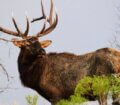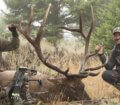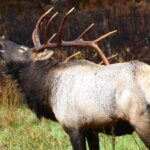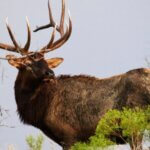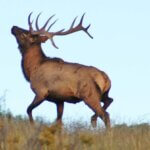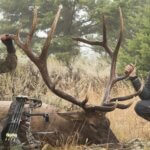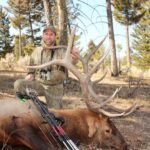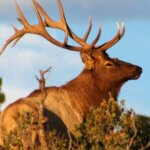Editor’s Note: Will Primos of Flora, Mississippi, has been hunting elk every year since 1988. “I’ve had some fantastic opportunities in my lifetime to call in hundreds of bull elk,” he explains. Primos, the creator of Primos Hunting (https://www.primos.com/) and generally hunts for elk in three states annually. He’s been producing videos and products for the elk-hunting industry for many years. “We wanted to get the public excited about not just elk but hunting and protecting them as well,” Primos says. “We’re strong supporters of the Rocky Mountain Elk Foundation and its mission.” Primos doesn’t just call and take elk himself, he also guides and calls for other people. Primos has taken or called more than 200+ elk for others for his videos.
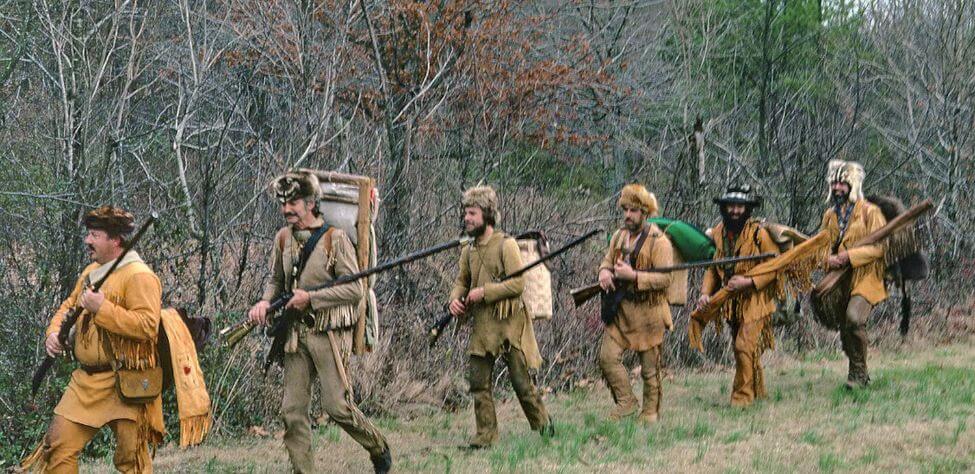
All but four bulls that I’ve taken in my lifetime have been with a bow, but this was a special hunt where I took a bull elk with a .54 caliber flintlock rifle. I’m a big fan of the 8,000-mile Lewis and Clark Expedition in 1804 exploring the Louisiana Purchase that the U. S. bought from France for 3 cents per acre from the Mississippi River west to the Rocky Mountains and from the Gulf of Mexico to the Canadian border.
This hunt was to be in Colorado, right below Culebra Peak, part of the Sangre de Cristo Range. I had contacted the Harper Foundry in Pennsylvania who had built the guns for Lewis and Clark to take on this expedition. These were a carbine type of flintlock rifle and the .54 caliber flintlock was much shorter than the Kentucky Long Rifle. I took one of the flintlock carbine rifles with me on this hunt to commemorate the Lewis and Clark Expedition.
I’m a real fan too of the movie, “Jeremiah Johnson,” because it showed what the early hunters and trappers of the United States had to do to help open up the new Louisiana Purchase for settlers to follow them into this new portion of America after 1803. I wanted to put myself in the same position. So, I decided to film my taking a bull elk with the same type of rifle used back in the early 1800s.
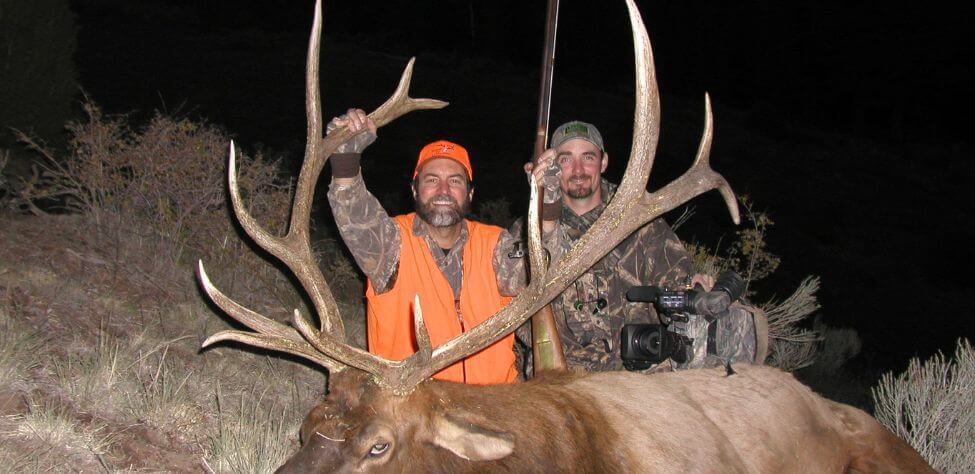
The hunt was scheduled for five days, and we were struggling. On the afternoon of the fifth day of the hunt, one of our guides, Alonzo Labata, told us that he thought a big elk was coming down a drainage. He didn’t think anyone else had found this elk. So, we moved into that area. As the sun went down, we heard the bull and started calling to him. The bull was bedded-down at about 400 yards from where we were, and we only had to move about 20 yards to get close to him. Since this bull was following a big herd of cows, instead of calling the bull, we started talking to the cows. Those cows headed toward us, bringing the bull along behind them.
I was wearing my favorite – Mossy Oak Bottomland camo because that pattern works best for me in that high mountain country. I realized that shooting a flintlock was much different from shooting a conventional rifle or a bow at an elk because there’d be a slight delay from the time I squeezed the trigger to when the powder ignited, and the gun fired. I had my gun tuned-up, so there was only about a half a second delay from the time I squeezed the trigger until the gun fired. I practiced quite a bit on my follow-through to make sure I didn’t jump, flinch or move the barrel of the gun until well after it had fired. The bullet hit the elk just above the heart, and he only traveled about 60 yards before he went down. He scored about 335 inches.
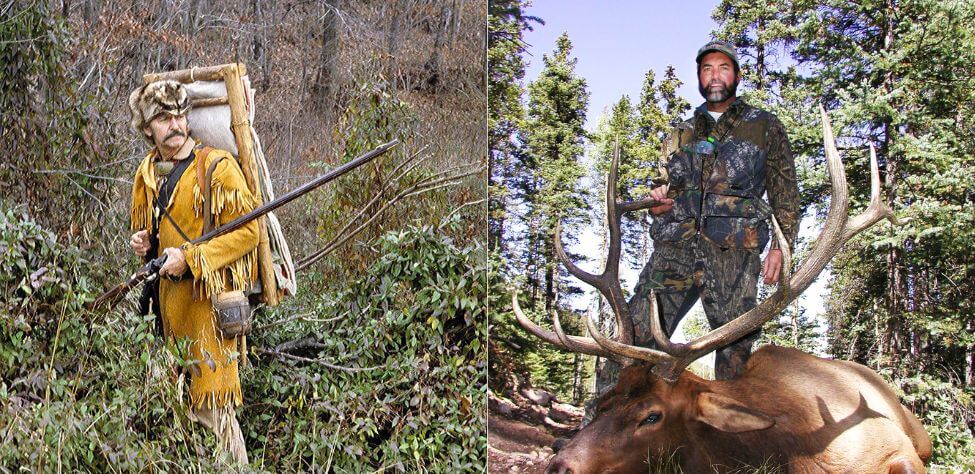
This hunt was a win-win. We’d called a beautiful bull up to within 12 yards of us, and I was able to take him. Being able to walk in the footsteps of Lewis and Clark was a great experience, however, one unique sidebar to this story is that three months after this hunt, documentation was found that the history books failed to accurately report that the guns that Lewis and Clark took on their expeditions were not the .54 caliber flintlock carbine with which I hunted. Although those guns were what the expedition was supposed to use, they weren’t ready in time for the Lewis and Clark Expedition. The Expedition had to take long rifles (Kentucky-style flintlocks) with them on their historic trip across the Northwest. Even though we were trying to portray a hunt with the Lewis and Clark rifles, when this new documentation was found, we learned we did the right thing with the wrong gun.
Tomorrow: No Call Calling Elk and Taking the Shot
Expert Guidebooks on Elk Hunting: Best Sellers
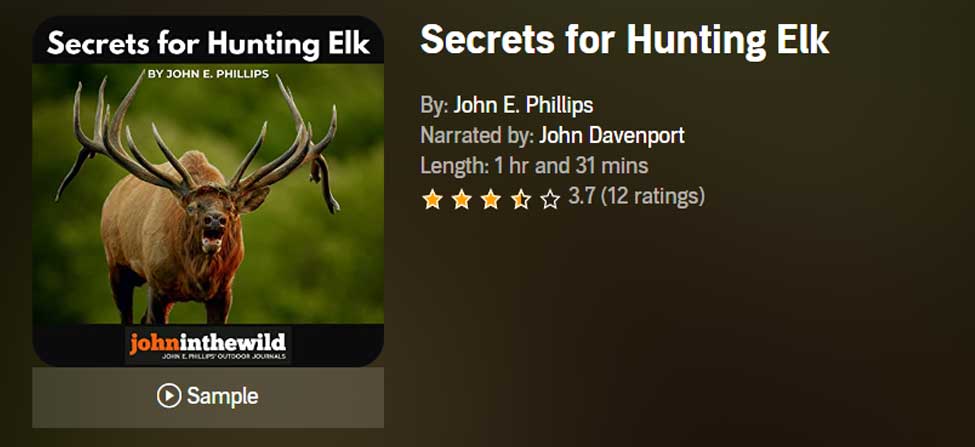
Secrets for Hunting Elk
The quickest, easiest (if there is an easy way), and safest way to find and take that bull elk of a lifetime will be to hunt with a guide.
Chad Schearer, a longtime Montana guide and TV personality, told me, “My hunter is my gun. If I get to the elk, and my hunter isn’t with me, then we don’t take the elk. My job is not only to find the elk but also to help the hunter get to the elk and make the experience as enjoyable as I can for him.” That’s the kind of fella with whom I want to go elk hunting.
An elk hunt can be tough, but it doesn’t have to be so tough that you don’t enjoy it. That’s why this elk hunting book starts with the confessions of an elk guide and with Chad Schearer’s philosophy of what the guide and the hunter’s relationship should be.
A good portion of your success will depend on your physical condition, and Matt Morrett of Harrisburg, Pennsylvania explains how an eastern hunter can get ready physically during June and July to hunt western elk, the animals he describes as, “Like deer or turkeys on steroids.”
Wayne Carlton, well-known elk hunter and TV and video personality from Montrose, Colorado, tells us what types of elk calls to use and what to say to the elk. Mike Miller of Colorado, another elk guide and Mossy Oak video personality, has tactics for the best equipment for bowhunting and gun hunting elk.
You’ll learn helpful strategies and hunting tips in this book, as well as some straightforward hunting methods that will help to make your elk hunt more successful.
“Thanks to the advice in your elk hunting books, I was able to call up a nice 6-point (6X6) bull elk! He was bugling like crazy. I called him in from about a ¼ mile away. Called him into bow range (about 40 yards away). It was a thrill!” ~Rob Brannon
VERSIONS: AUDIBLE & KINDLE
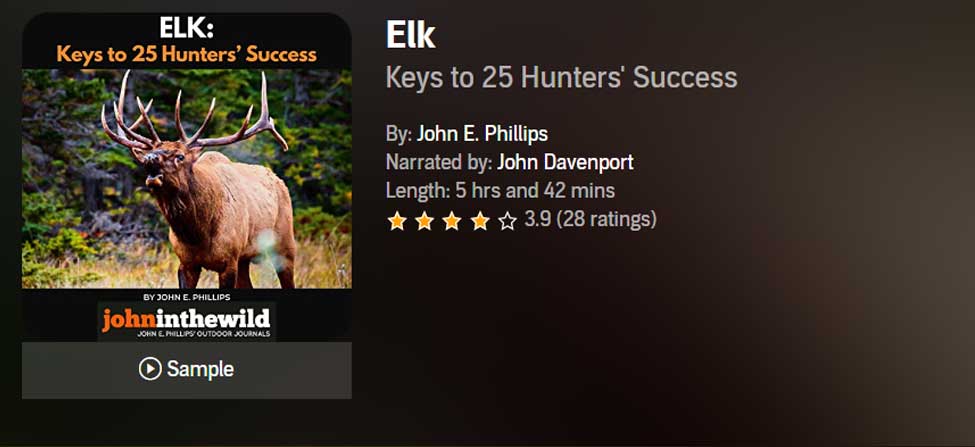
Elk: Keys to 25 Hunters’ Success
Often just one tip or tactic makes the difference in whether you take an elk home to dinner or have to hike back to the truck by yourself. In John E. Phillips’ latest elk book, Elk: Keys to 25 Hunters’ Success, you’ll learn from successful elk hunters the strategies they use to find and take elk.
Many know that the technique that seems to work most often is to hunt where other elk hunters don’t and understand where the elk are before you go on a hunt by studying data from each state, visiting HuntData (see chapter 1), examining maps, and reading postings on elk forums.
This book also tells you how to get ready physically for an elk hunt, including participating in Train to Hunt Competitions, what gear you need to take, how to enjoy a successful do-it-yourself elk hunt, or how to pick the best elk guide for you. You’ll also hear about the X System and the Broken Y System of hunting elk.
Although no one person has all the answers on how to help you find and take your elk, I’m convinced that this book’s outdoors men and women will teach you how to have satisfying elk hunts.
As my friend Karl Badger once told me, “Elk hunting doesn’t get any better than when I ride horses into the high backcountry, see two grizzly bears, hear a pack of wolves howl close to camp all night long, eat plenty of delicious food prepared on a fire and enjoy the company of good friends.”
VERSIONS: AUDIBLE, KINDLE & PRINT
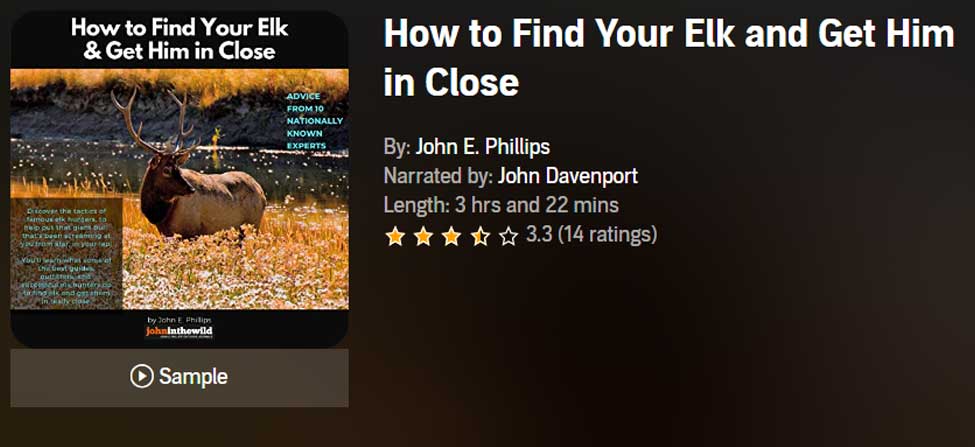
How to Find Your Elk and Get Him in Close will teach you the tactics of 10 nationally known elk hunters, to help put that giant bull that’s been screaming at you from afar, in your lap. You’ll learn what some of the best guides, outfitters, and successful elk hunters do to find elk and get them in really close.
Also in this audiobook, you’ll notice that the majority of the experts call elk to within bow range. We selected numerous bowhunters and bowhunting guides, since the bowhunter has to get much closer to a bull than the gun hunter does – often less than 20 or 30 yards – practically in your lap.
On one elk hunt, I’d heard this bull bugle all morning. My guide had called him within 30 yards, and he was standing just inside black timber. I saw the smoke from his nose wafting out into the icy air less than 30-yards away. All the bull had to do was step out, and I could take the shot with my bow. But then, through no fault of my guide or me, the bull vanished.
The only conclusion I could come up with to understand why the bull I wanted to take with my bow hadn’t stepped out and given me a shot, was because he got raptured. He evidently had left the earth with no trace of himself.
This hunt was when I started wanting to learn more about hunting elk up close. In this book, I’ve tried to find some of the most knowledgeable, experienced, and practical elk hunters. I’ve always found that the best way to learn any outdoor skill, is to either hunt or fish with the best sportsmen in that field.
Often, in elk hunting, that means elk guides, who generally hunt every day of the season and receive a salary for every hunter they guide. So, I’ve put together a group of some of the best elk hunters I know to help us all learn how to find bull elk and get them in close.
VERSIONS: AUDIBLE, KINDLE & PRINT

